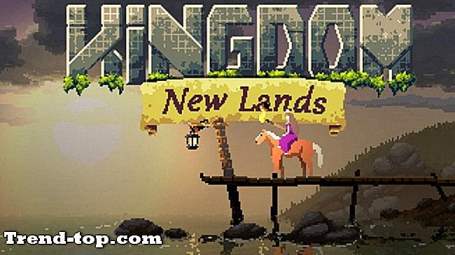From The Ruins Mac OS
Start up from macOS Recovery
Determine whether you're using a Mac with Apple silicon, then follow the appropriate steps:
Slide 1 Slide 1 (current slide) Slide 2 Slide 2 (current slide) Slide 3 Slide 3 (current slide) Slide 4 Slide 4 (current slide) Slide 5 Slide 5 (current slide) Slide. Mistakenly considered to be Aztec in origin by early white settlers, the site actually contains the ruins of a 12th-century Ancestral Pueblo settlement built by people associated with Chaco Canyon to the south. The Ancestral Pueblo people, formerly known as Anasazi, were ancestors of the modern Pueblo Indians.
Apple silicon
Turn on your Mac and continue to press and hold the power button until you see the startup options window. Click the gear icon labeled Options, then click Continue.
Intel processor
Make sure that your Mac has a connection to the internet. Then turn on your Mac and immediately press and hold Command (⌘)-R until you see an Apple logo or other image.
If you're asked to select a user you know the password for, select the user, click Next, then enter their administrator password.
Reinstall macOS
Select Reinstall macOS from the utilities window in macOS Recovery, then click Continue and follow the onscreen instructions.
Follow these guidelines during installation:
- If the installer asks to unlock your disk, enter the password you use to log in to your Mac.
- If the installer doesn't see your disk, or it says that it can't install on your computer or volume, you might need to erase your disk first.
- If the installer offers you the choice between installing on Macintosh HD or Macintosh HD - Data, choose Macintosh HD.
- Allow installation to complete without putting your Mac to sleep or closing its lid. Your Mac might restart and show a progress bar several times, and the screen might be empty for minutes at a time.
After installation is complete, your Mac might restart to a setup assistant. If you're selling, trading in, or giving away your Mac, press Command-Q to quit the assistant without completing setup. Then click Shut Down. When the new owner starts up the Mac, they can use their own information to complete setup.

Other macOS installation options
When you install macOS from Recovery, you get the current version of the most recently installed macOS, with some exceptions:
From The Ruins Mac Os Catalina
- On an Intel-based Mac: If you use Shift-Option-Command-R during startup, you're offered the macOS that came with your Mac, or the closest version still available. If you use Option-Command-R during startup, in most cases you're offered the latest macOS that is compatible with your Mac. Otherwise you're offered the macOS that came with your Mac, or the closest version still available.
- If the Mac logic board was just replaced, you may be offered only the latest macOS that is compatible with your Mac. If you just erased your entire startup disk, you may be offered only the macOS that came with your Mac, or the closest version still available.
You can also use these methods to install macOS, if the macOS is compatible with your Mac:
- Use the App Store to download and install the latest macOS.
- Use the App Store or a web browser to download and install an earlier macOS.
- Use a USB flash drive or other secondary volume to create a bootable installer.

Sony Online Entertainment has released its Macintosh edition of EverQuest as a free online download. Measuring 2GB, it’s not small, but if you’ve ever wanted to play the game, this may be your best chance. You must create an account and set up billing to play it, however.
EverQuest is the massively multiplayer online role playing game (MMORPG) that set records and created headlines for years. It’s largely credited with the popularization of the genre, though it’s been eclipsed by other major MMORPG releases, like Blizzard Entertainment’s World of Warcraft. The game is set in a persistent online world populated by monsters and other characters of myths and legend. After creating your online persona, you choose a profession, develop skills, amass treasure and fortune as you explore the world an interact with other players.
Released in 2003, the Macintosh version of EverQuest included several expansion packs like The Ruins of Kunark, The Scars of Veilous and The Shadows of Luclin. The Mac conversion of EverQuest was hotly anticipated and has created a very loyal group of players.
Mac EverQuest is segregated on Macintosh-specific servers, however — a decision that disappointed many Mac users and experienced EQ players who had hoped to interact with their Windows-using friends. Still, EverQuest for Mac has trekked on, despite occasional technical setbacks and the release of other expansion packs and a sequel on the Windows platform.
Mac gamers who bought the boxed version of EverQuest received printed documentation, maps, a trial membership and a code that could be used as a “trial” version to let other Mac gamers install and run the software. Like most MMORPG’s, EverQuest uses a subscription model — it’s priced starting at $12.95 per month, with discounts available if you purchase longer subscription plans.
“Free” is a bit of a relative term here, as you still must create a Sony Station.com account in order to download the software, and you must enroll in a billing plan before your account is activated. You won’t be charged until a 15-day trial period has expired, however, so you can grab the software and play for free for a couple of weeks to see if you like it.
From The Ruins Mac Os 11
Minimum system requirements for EverQuest for Mac call for a G4/700MHz or faster, 256MB RAM, Mac OS X v10.2.4 or later, ATI Radeon or Nvidia GeForce 3D graphics with at least 32MB VRAM, 28.8 Kbps or faster Internet connection and 2.1GB hard disk drive space.